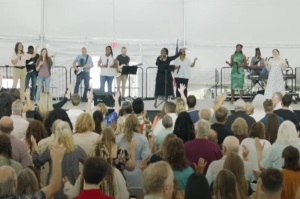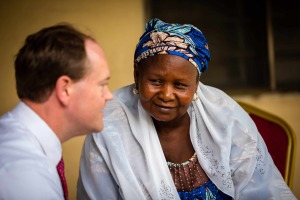American 'Nones': More Skeptical than Anti-Religious
Nonreligious Americans or "Nones" are no longer a fringe group, researchers state in a new report.
Nones presently make up 15 percent of the total adult U.S. population and the statistic is even higher among young people. Twenty-two percent of 18-29 year olds claim the nonreligious label, a jump from 11 percent in 1990, according to Trinity College's American Nones: Profile of the No Religion Population.
If the younger generation remains nonreligious, researchers point out that the percentage of the U.S. population made up of Nones will continue to rise.
"Will a day come when the Nones are on top? We can't predict for sure," lead researcher Barry Kosmin told USA Today.
Kosmin and Ariela Keysar released statistics earlier this year revealing the rise in the number of Americans who do not identify with any religion over the past two decades. The Nones increased from 8.1 percent of the adult population in 1990 to 15 percent in 2008, findings from their widely reported American Religious Identification Survey showed.
The researchers released a follow-up report on Tuesday to provide a more detailed look at who the Nones are and offer predictions on the growing nonreligious population.
Nones may best be described as skeptics. Twenty-seven percent of Nones believe in a personal God. Hard and soft agnostics make up 35 percent of the None population and atheists account for only 7 percent of Nones. Contrary to what many believe, Nones are not particularly superstitious or partial to New Age beliefs. They are, however, more accepting of human evolution than the general U.S. population.
"American Nones embrace philosophical and theological beliefs that reflect skepticism rather than overt antagonism toward religion," the researchers state.
Compared to the general population, Nones are disproportionately male, younger, and more likely to be Westerners and political independents. But researchers found that they are increasingly similar to the general U.S. population in terms of their marital status, educational attainment, racial/ethnic makeup and income.
When it comes to religious roots, researchers found that the majority of Nones came from religious homes (73 percent) and are first-generation Nones or "(de)converts" to non-religion (66 percent).
Nearly a quarter (24 percent) of Nones are former "Catholics" and 11 percent are former "Christians." Almost a third (32 percent) who are currently Nones were Nones at the age of 12.
Researchers note that among those who reported being Nones at 12 years of age, 41 percent switched to join a religion after the age of 12 and 59 percent remained nonreligious. Among those who identified with a religion at 12 years of age, only 12 percent switched to become a None. The retention rate is higher for the religious but the report points out that Nones are growing at the expense of the religious.
"Mathematically, Nones can lose a larger percentage than the religious and still grow as a percentage of the population because they are starting as a smaller percentage of the population," the report states.
If current trends continue, Nones can make up around a quarter of the American population in two decades. But the report highlights that the annual growth rate has slowed at the beginning of the 21st Century. Whereas 1.3 million adults were joining the ranks of the nonreligious in the 1990s, the number of Americans being added to the None population has halved to 660,000 a year since 2001.
Still, researchers caution that because of the Nones' similar social characteristics to the rest of the population, "the transition from a largely religious population to a more secular population may be so subtle that it can occur under the radar as happened during the 1990s."





























